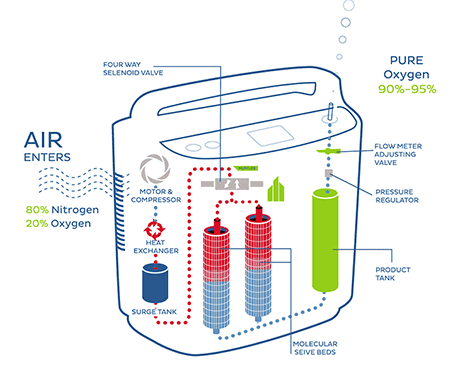
Home oxygen concentrators are for home use because they can only be plugged into an AC outlet and cannot run on battery or inside a car with a DC adapter. They’re also usually larger than portable concentrators, so you wouldn’t want to have to transport them around. Even so, stationary oxygen units are still necessary and make the lives of oxygen therapy users easier.
If you only need to use oxygen therapy a few hours out of the day, a stationary model might be a better decision, because portable models can be much more pricey. You might only need to use it overnight, and you don’t plan on doing a lot of traveling to other places where you would be staying overnight. If you would generally only be using your oxygen therapy while you’re at home, a stationary oxygen concentrator is a way to go.
Moreover, stationary oxygen concentrators provide a higher liter flow compared to portable units, that’s one of the reasons why they are bulkier. Another important feature of stationary home oxygen concentrators is that they can supply a continuous flow of oxygen, making them compatible with CPAP machines. Portable oxygen concentrators can supply oxygen on a pulse dose, that is, it supplies a burst of oxygen right when the patient inhales. If you are prescribed a continuous flow of oxygen, stationary units are a great option.










